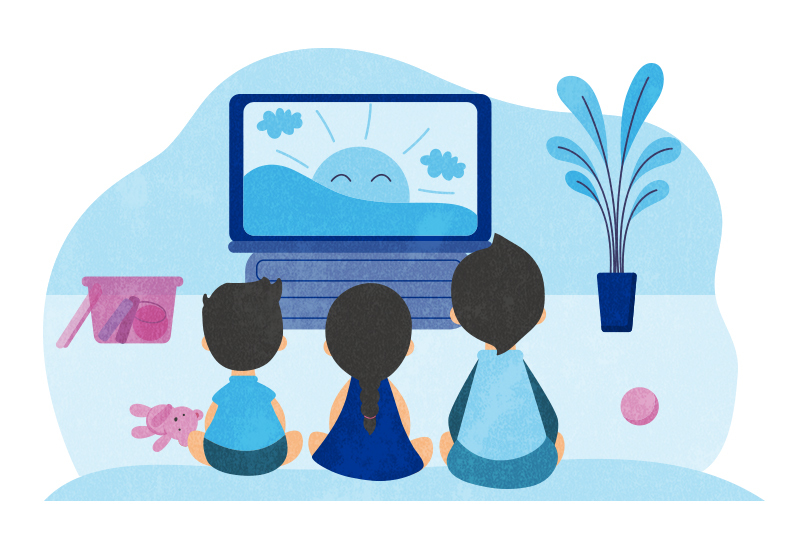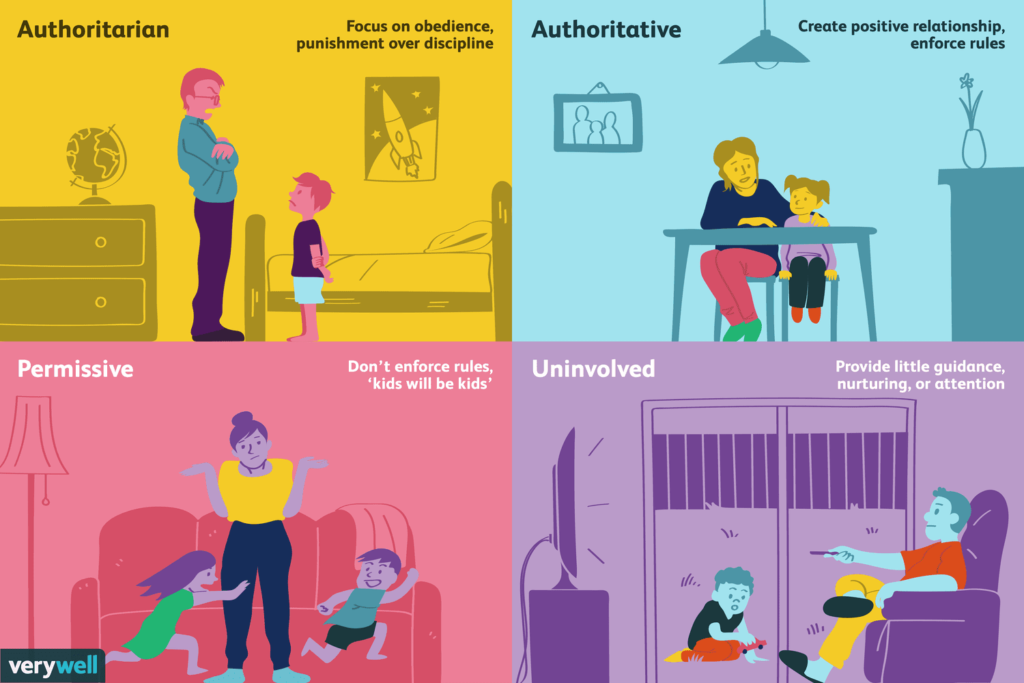In today’s digital age, children are growing up surrounded by screens. From tablets and smartphones to computers and televisions, screens are an integral part of their lives. While technology offers numerous educational and entertainment opportunities, it also raises concerns about excessive screen time. This article explores the delicate balance between digital learning and playtime for kids, providing insights and tips for parents and caregivers.
If you think working at a nursery would be the perfect job for you, you can take the 5-minute career change quiz to find out!
The Impact of Excessive Screen Time

Excessive screen time can have a profound impact on a child’s physical and mental well-being. When children spend too much time in front of screens, they miss out on crucial activities like physical play and face-to-face interactions. This sedentary lifestyle can lead to health issues such as obesity and poor posture. Additionally, excessive screen time has been linked to sleep disturbances, as the blue light emitted by screens can interfere with the body’s natural sleep-wake cycle.
Furthermore, prolonged exposure to screens can affect a child’s cognitive development. While educational apps and websites can be beneficial, excessive use can hinder critical thinking and problem-solving skills. Children may become passive consumers of content rather than active learners.
To address these concerns, it’s essential for parents to set limits on screen time. Establishing a healthy screen time routine is the first step toward finding the right balance. Sometimes it could be beneficial to move to a neighborhood where your kids will have a chance to meet more friends and spend more time outside. If you are interested in that check homes for sale in Boca Raton.
Setting Screen Time Guidelines
Setting clear and consistent screen time guidelines is crucial for maintaining a healthy balance between digital learning and play. Here are some tips for establishing effective rules:
Firstly, communicate openly with your child about the importance of balance. Explain that while screens can be fun and educational, there are limits to how much time they should spend on them. Use age-appropriate language to help them understand the reasons behind these guidelines. If you wish to help out families who lack funds to provide for their children, you can do so by joining loan servicing software for investors and lending out money to those in need.
Secondly, create a screen time schedule. Allocate specific time slots for activities like homework, recreational screen time, and outdoor play. Having a structured routine helps children understand when it’s appropriate to use screens. Make sure to consider your child’s age and school commitments when setting these time slots.
Thirdly, use parental controls. Many devices and apps offer parental control features that allow you to set time limits and restrict access to certain content. Take advantage of these tools to enforce your guidelines. Keep in mind that these controls should be used as aids, not substitutes for open communication with your child about screen time.
Did you know that a company that provides managed IT services in San Antonio also works on an app for parents so they can easily control screen time?
The Role of Educational Screen Time
Not all screen time is created equal. Educational content can be a valuable resource for children’s learning and development. However, it’s essential to choose high-quality educational materials and monitor your child’s engagement. Especially when they’re on personal care services in Dallas TX, they need to take it easy with these kinds of distractions and should try to rest as much as possible.
One of the benefits of educational screen time is personalized learning. Many educational apps and websites adapt to a child’s skill level, providing tailored exercises and challenges. This individualized approach can help children learn at their own pace and overcome academic hurdles. It’s important to periodically review the content your child is engaging with to ensure it aligns with their educational needs.
Additionally, educational screen time can spark curiosity and encourage a love of learning. Interactive apps and games often present information in engaging ways, making subjects like math and science more appealing to young learners. Encourage your child to ask questions and explore topics further beyond what they encounter on screens. This can foster a sense of curiosity that extends beyond digital boundaries.
Encouraging Offline Play

While digital learning has its merits, it’s equally crucial to encourage offline play and face-to-face interactions. Physical activities not only promote physical health but also contribute to social and emotional development. Just as one might seek relaxation at a spa in Toronto, offline activities offer a vital break from the digital world.
Outdoor play, in particular, offers numerous benefits. It allows children to explore the natural world and develop an appreciation for the environment. Nature provides a rich sensory experience, from the textures of leaves to the sounds of birds and the feeling of the sun on their skin. This type of exploration can awaken a sense of wonder and ecological consciousness.
Outdoor play also provides opportunities for social interaction as children engage in group activities like tag or hide-and-seek. These interactions help children develop important social skills such as cooperation, negotiation, and conflict resolution. In the digital age, where communication can be increasingly screen-mediated, face-to-face interactions remain essential for building strong interpersonal relationships. If your children love to climb on the roof and they damage some tiles you can contact a roofing company in San Diego to fix it.
Moreover, offline play promotes creativity and imagination. When children engage in unstructured play, they have the freedom to invent games, stories, and scenarios. This fosters creativity and problem-solving skills that may not develop through screen-based activities. Encourage your child to use their imagination by providing them with open-ended toys and materials like building blocks, art supplies, and costumes.
Finding a Balance
Balancing digital learning and playtime requires a thoughtful and flexible approach. Every child is unique, and what works for one may not work for another. Therefore, it’s essential to observe your child’s behavior and adjust your screen time guidelines accordingly. You can get your child away from the screen by going on a horse ride. Don’t forget to bring saddle blankets to protect the horse’s back.
Keep in mind that screen time guidelines should evolve as your child grows and their needs change. What’s appropriate for a preschooler may not be the same as what’s suitable for a teenager. Periodically review and adjust your rules to ensure they align with your child’s developmental stage and school requirements.
You should always teach your children what food to avoid before exam, in order to prevent distractions such as stomachaches or diarrhea.
Furthermore, involve your child in the decision-making process. Ask for their input on how they would like to spend their screen time and what activities they enjoy offline. When children feel like their opinions are valued, they are more likely to cooperate with screen time limits. This collaborative approach can also help your child develop a sense of responsibility and self-regulation when it comes to screens.
Nurturing Critical Thinking
In the digital age, fostering critical thinking skills in children is crucial. While screens can provide a wealth of information, it’s essential to encourage children to think critically about what they encounter. Help your child analyze and evaluate the content they consume. Teach them to question the accuracy of information, consider different perspectives, and distinguish between facts and opinions.
Engaging in discussions about what they see and read online can be an excellent way to nurture critical thinking. Encourage them to ask questions and express their opinions. This not only enhances their analytical skills but also strengthens their communication abilities. If you were driving your kid to the communication skills training and your car broke down on the side of the road, you could use a roadside battery replacement service to get back on the road quickly.
Digital Citizenship Education
As part of a well-rounded approach to screen time, consider incorporating digital citizenship education into your child’s routine. Digital citizenship involves teaching children how to use technology responsibly and ethically. It covers topics such as online safety, cyberbullying prevention, and digital etiquette.
Online safety is paramount in the digital world. Teach your child about the importance of protecting their personal information and avoiding interactions with strangers online. Ensure they understand the risks associated with sharing too much information on social media platforms and websites. You can also provide an extra layer of security for your home or office by hiring a company for access control installation in Philadelphia.
Cyberbullying is a concern in the digital age. Discuss the importance of treating others with kindness and respect online, just as they would in person. Encourage them to report any instances of cyberbullying and to seek help if they ever experience it.
Digital etiquette, or netiquette, involves teaching children how to behave politely and respectfully online. Remind them that their online actions have consequences and can impact their digital reputation.
Screen-Free Zones and Times
Creating designated screen-free zones and times in your home can further help establish a healthy balance. Designate areas where screens are not allowed, such as the dining room and bedrooms. This encourages face-to-face communication and helps prevent screens from interfering with sleep. To create a truly screen-free environment, you may also want to consider using black roller blinds in these areas.
Additionally, consider implementing screen-free times during the day. For example, you could establish a rule that screens are not used during family meals or in the hour leading up to bedtime. These breaks from screens provide opportunities for relaxation, quality family time, and a chance for children to wind down before sleep.
Monitoring and Adjusting

Regularly monitor your child’s screen time and the content they access. Keep an eye on their online interactions and the websites they visit. Ensure that the content aligns with your family’s values and is age-appropriate.
It’s also essential to stay informed about new technologies and trends in digital media. Technology is continually evolving, and being aware of the latest apps and platforms can help you make informed decisions about what is suitable for your child.
Be prepared to adjust your screen time guidelines as needed. If you notice that screen time is negatively affecting your child’s behavior, mood, or sleep, it may be time to reevaluate and make necessary changes.
Encouraging Creative Screen Time
Encouraging creative screen time can be a constructive way to make the most of technology while fostering your child’s creativity and problem-solving skills. Creative screen time involves activities that go beyond passive consumption of content and instead engage your child in actively creating or exploring.
One way to promote creative screen time is by choosing interactive and educational apps. Look for apps that encourage your child to participate actively, such as those that involve problem-solving, building, or storytelling. These apps can stimulate their creativity and critical thinking.
Co-viewing and co-creating with your child can also be highly beneficial. Sit down together to explore digital art programs, coding platforms, or educational games. This not only allows you to guide their screen time but also strengthens your bond and provides opportunities for learning together. If you are viewing the properties that you would like to buy, be sure to check with a construction lender to see if you are pre-approved for a loan. This will give you peace of mind knowing that you have the financial resources in place to purchase your dream home.
Consider exploring educational content on video-sharing platforms. Many educational creators produce high-quality, informative, and engaging videos on platforms like YouTube. However, it’s essential to supervise your child’s use of these platforms to ensure they access appropriate content.
Another creative screen time option is virtual field trips. Use the internet to take your child on virtual adventures, exploring museums, historical sites, and natural wonders from the comfort of your home. This can be both educational and inspiring.
Remember to balance creative screen time with other creative activities offline. Encourage your child to draw, paint, write, or engage in hands-on projects. This holistic approach to creativity allows them to explore their interests through various mediums. By incorporating creative screen time into your child’s routine, you can harness the positive aspects of technology while encouraging their imagination and innovation. For example, you could find cheap car rentals online to take your child on a creative road trip.
Conclusion
In conclusion, finding the right balance between digital learning and playtime for children in today’s digital age is a multifaceted challenge. Excessive screen time can have adverse effects on physical health, cognitive development, and social well-being. However, when used mindfully, screens can be powerful tools for education and entertainment.
As parents and caregivers, it is our responsibility to guide our children in using technology in a way that enriches their lives rather than hinders their growth. This involves setting clear screen time guidelines, promoting educational content, encouraging offline play, and nurturing critical thinking skills.
If you have a website related to this topic and want to reach more parents, consider partnering with an SEO company in Colorado. A good SEO company can help you improve your website’s ranking in search results so that more parents can find your website and learn about your resources.
Moreover, incorporating digital citizenship education, designating screen-free zones and times, and monitoring and adjusting screen time as needed are essential components of a comprehensive approach to screen time management.
The digital age presents both opportunities and challenges, and it is our role to equip our children with the skills and knowledge they need to navigate this digital landscape safely and responsibly. By doing so, we can help them strike a healthy balance between the digital world and the real world, ensuring that they grow and thrive in all aspects of their lives.





































